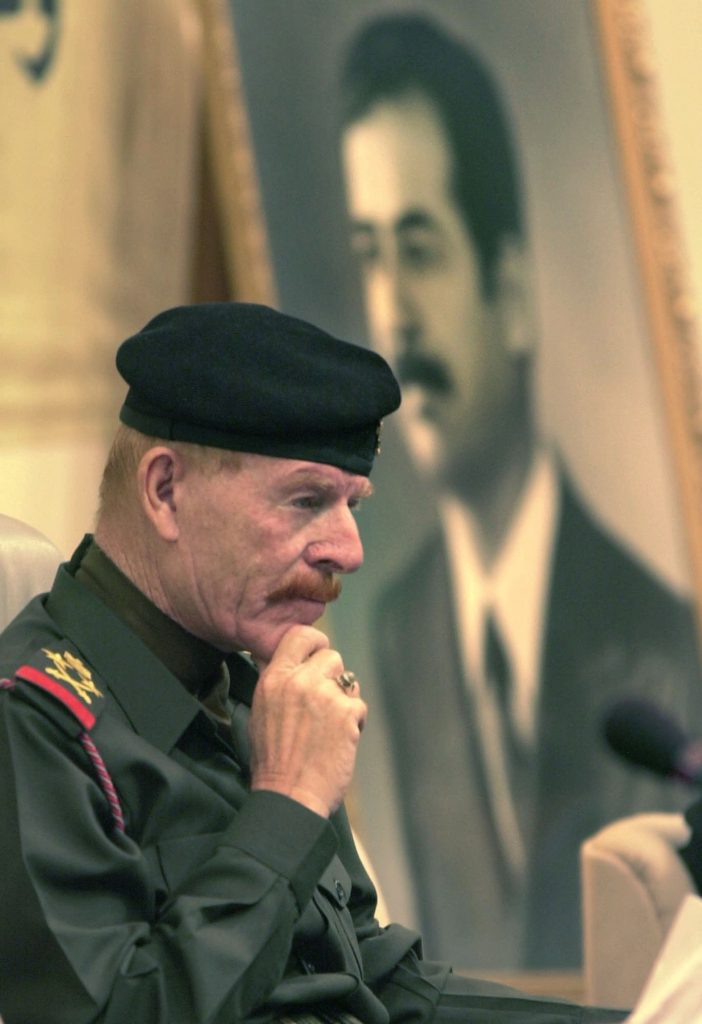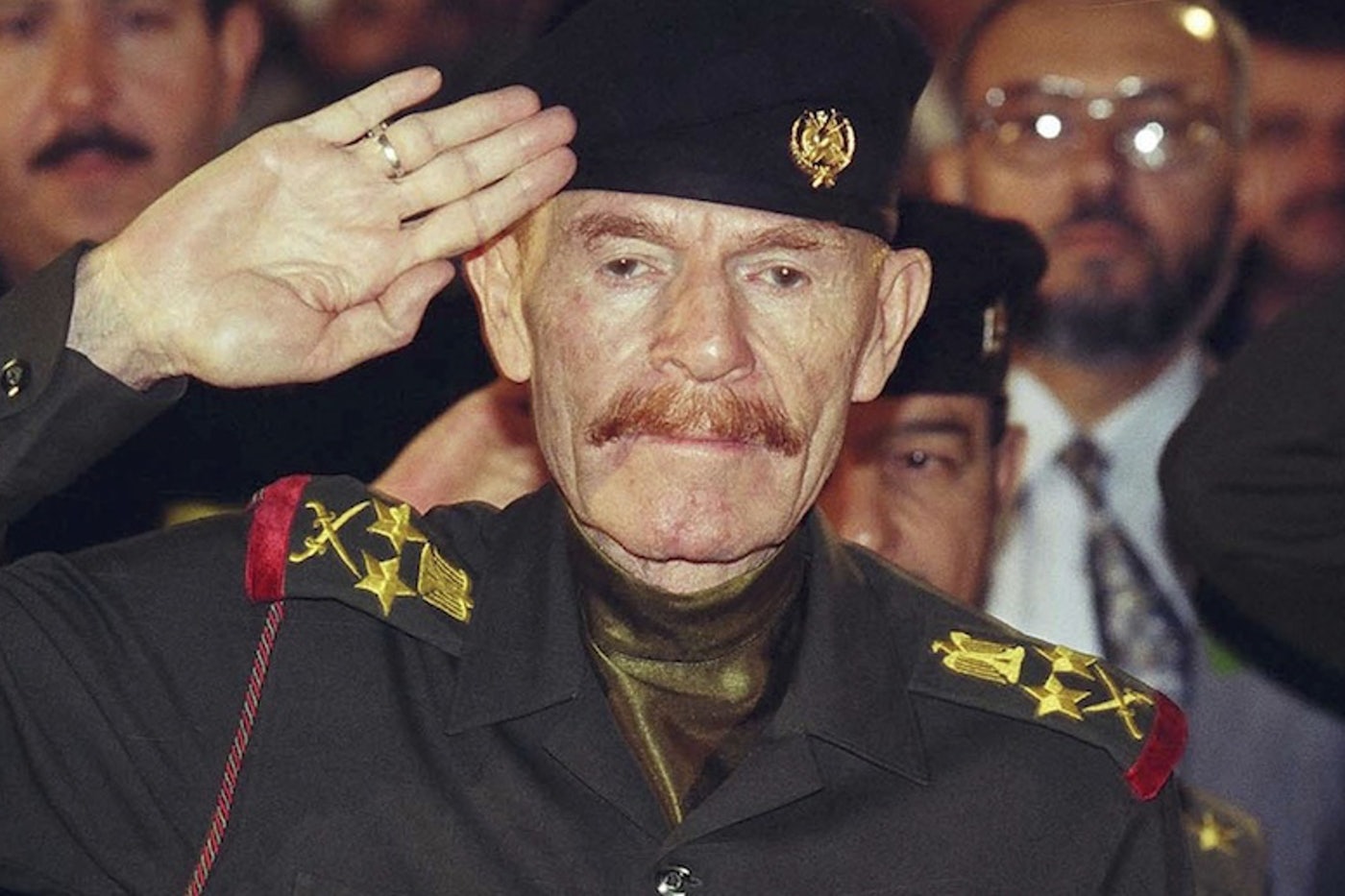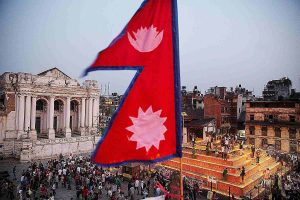So, I imagine most of you know who Saddam was. Back before America was screeching angrily about north Korea’s ‘weapons of mass destruction’, it was the Republic of Iraq stuck firmly in their crosshairs. There was a whole bunch of different wars, with the Gulf War officially marking Iraq as one of America’s hot post Cold War targets. Soon Iraq is labelled as part of an ‘axis of evil’ and in 2003, a swift military invasion unseats the Iraqi government. Within a few months, Saddam is captured and most of his cronies go down with him. The Saddam era government has been wiped out… Except for one key man. Vice President Izzat al-Douri.
Besides his remarkable resemblance to Walter White from Breaking Bad, there’s a lot of interesting things about Izzat al-Douri. While Saddam was captured in the same year as the invasion of Iraq itself, al-Douri stayed undercover right up until this year, when he seemingly passed away of natural causes, never captured by the US. Now, you may be thinking, duh. Of course that’s gonna happen, he’s not Saddam, who cares if he gets captured or not? Well, I can quite easily demonstrate how significant a figure he was by how the US chose to rank him on their ‘playing card list’. …Yes, this will require some explanation.
Because the Ba’athist government scattered shortly after boots set down in Iraq, it was deemed important to capture all the important figures. Due to what I can only assume was knowing full-well that soldiers will just be goofing off, playing card games in their spare time, it was chosen to rank the top 52 suspects by their positions on a deck of playing cards. The Ace of Spades was Saddam himself while the Ace’s of Clubs and Hearts were his two sons, killed in a shootout in 2003. The Ace of Diamonds was Saddam’s personal secretary Abid Mahmud, captured shortly before Saddam. Looping back around to Spades, the King was the notorious ‘Chemical Ali’, Saddam’s presidential advisor, also caught in 2003. And at last, we have Izzat al-Douri, the vice president of Iraq, the King of Clubs and the number six most important figure who completely escaped. When we consider two of these were just Saddam’s infamous, overprivileged children, it would be fair to say that al-Douri was more the number four.
Now, I bet you still don’t care. So what, he didn’t get caught. Who wants to hear the story of some old vice president who hid in the desert for seventeen years? You see, that’s the thing. He didn’t hide in the desert. While not a big name like Osama bin-Laden or al-Baghdadi, Izzat al-Douri was a major figure in the anti-American insurgency forces. So with why you should care out of the way let’s delve into the story of the man himself and what he’d been up to.
Izzat al-Douri in Ba’athist Iraq

Al-Douri was in on the ground floor when things were heating up in Iraq. Before the Ba’ath party ever took power, he was known to have been associated with Saddam Hussein and they worked together within the party’s intelligence apparatus. When the party took control, he became interior minister and later the vice-chairman of the Revolutionary Command Council. This council was both the legislative and executive authority in the country, essentially being what ran the state itself. While this group was somewhat akin to a parliament at first, Saddam’s increasing influence soon saw the collapse of any semblance of democratic control, coming to a head with a public purging on July 22nd of 1979 which, among many others, saw the deaths of five of the Command Council’s twenty-two members. While many argue the council was merely a conduit for Saddam’s personal decision-making, it’s hard to doubt that Izzat al-Douri still played a major role in its functions and decisions. Even Hitler had his Goebbels, Goering and Himmler.
Al-Douri was later involved in the Gulf War and the vicious crackdown on Iraqi citizens after their uprising in 1991, seeing deaths in the tens of thousands. In 1993 he then personally supervised the ‘Return to Faith’ campaign, which saw the somewhat socially liberal and secular Iraq republic rapidly transform into a more theocratic regime. Iraq’s once vibrant nightlife rapidly disappeared and draconian punishments like amputation of hands and feet became regular for religious crimes. The campaign wasn’t terribly popular among much of the Ba’ath party, though it seems al-Douri embraced it to at least some degree. The only vocal opposition to the campaign known to have escaped punishment came from Saddam’s own son Uday. The effects of this campaign have been cited by some as a key reason for the eventual rise of ISIS.
Following the 2003 Invasion

Following the rapid toppling of the Iraqi government, an insurgency swiftly followed. While most seem to assume that this insurgency was wholly Islamist from the beginning, that’s not entirely true. A large faction was still loyal to the Ba’athist government and ideology, which rapidly became led by Izzat al-Douri as all other high-ranking figures were killed, captured or fled into hiding. America alleged that it was al-Douri who brokered alliances between the formerly hostile Ba’athists and radical Islamists, allowing them to fight against the US without collapsing into infighting themselves. In November of 2003, a $10 million dollar bounty was placed on his head by the US government. For the record, Osama bin-Laden’s bounty was $25 million while Abu Bakr al-Baghdadi’s only rose from $10 million to $25 million in 2017. They really, really wanted this guy caught or dead.
By the invasion of Iraq, Izzat al-Douri was one of only three Ba’ath party figures to have been part of the 1968 coup that brought the party to power in the first place. The other two were Saddam himself and the ‘ten of diamonds’ who had himself been captured in 2003. This placed al-Douri in a position of extraordinary power and influence over Ba’ath party loyalists. For the next five years there was… Silence. Very little news from such an important insurgency figure. It was in 2008 that an interview surfaced, in which al-Douri identified himself as: “the Supreme Commander of the Jihad and Liberation Front, the Pan-Arab Secretary General of Al-Baath Arab Socialist Party and the Secretary of Iraq Region.”
The first group is the Supreme Command for Jihad and Liberation, a coalition of 23 armed groups all active in the cause of Ba’athism and, interestingly, Sufi Islamism. While I cannot go into the full intricacies of Islamic sects here now, I can state that al-Douri himself was a major figure in the Naqshbandi religious movement, a specifically Sunni branch of the Sufi faith. This prestige made him not only the head of the supreme command, but also the military leader of their largest faction, the Army of the Men of the Naqshbandi Order. This faction was involved in the first battle of Fallujah, among many other violent campaigns. While being lesser known within the broader insurgency, the movement claims thousands of members and high popular support in areas with a religious background they’re affiliated with.
The complete umbrella of groups is enormous, with total combined membership likely in the tens of thousands. Though the rather incestuous nature of many of the groups, along with the turmoil cast over all with the rise of ISIS may well have sapped them in the last few years. They are also not the only Ba’athist militant movements in the region, with the likes of the ‘General Military Command for Iraqi Revolutionaries’ allegedly boasting tens of thousands of members by itself, while being allied with the al-Douri faction. It seems likely that the only reason al-Douri hadn’t led them as well is because of the choice to carve a niche out of the Sufi Islamist section of Ba’athists.
Anyway though… What was the other part of that quote? The ‘Pan-Arab Secretary General of the Al-Baath Arab Socialist Party’. What al-Douri just said there is that he is the leader of the Ba’ath Party, the position that Saddam himself had held. In other words, al-Douri considered himself a de-facto successor and had the military and political might to follow up on it. Imagine if after Hitler’s death, Himmler re-emerged five years later leading a bloody insurgency, declaring himself the new Fuhrer, while also championing a new extremely specific religious focus? It would seem like something out of a schlocky action movie, yet here we are. This happened.
Izzat al-Douri and the Rise of ISIS

A video emerged of Izzat al-Douri in 2013, showing him in military attire with a Ba’athist flag in frame, lending his support to the then-ongoing Sunni led protests against a predominantly Shia government. During the Ba’athist era, hatred and fear towards the Shia population of Iraq and particularly towards an alleged threat from Iranian influence was a major political talking point. The Iran-Iraq war was the most notable instance of this, so it’s no wonder that the Ba’athist party would hate and fear the new Shia Iraqi government. When popular protests emerged against the perceived anti-Sunni sectarianism of the government, the Ba’athists seemed a natural fit to step in and come to the forefront!
But… As we now know, that’s not what happened. Or… That’s not all that happened anyway. June 2014 saw the arrival of a new player on the scene, that being ISIS. While ISIS had existed in one way, shape or form for over a decade at this point, it was emerging as both the largest, most effective and most ruthless organization in the conflict. One characterization we attribute to ISIS now is its fierce refusal to accept anyone who steps outside its religious orthodoxy… This was somewhat less true at the start. The Northern Iraq offensive of June 2014 saw many major cities fall to ISIS… And its allies. The Army of the Naqshbandi Order was a major ally in the conflict and were even seen as the major player in some parts of Mosul and Tikrit. It’s well known that former Ba’athist officers soon swelled the command structure of ISIS, giving it a more professional edge. While this may have bled support from the mainstream Ba’athist movement, Izzat al-Douri’s faction maintained its independence from the fledgling death cult.
While ISIS soon outgrew the need for allies, it’s entirely possible that the scale of their success would have been impossible without the support of al-Douri, whose authority and connections granted a degree of legitimacy, while the presence of his army alongside ISIS gave many a hope that the most violent tendencies of ISIS would be tempered. What followed immediately after remains unclear, with some sources arguing that infighting began almost immediately, while others claimed an uneasy truce existed whereby ISIS would hold back on some of their more intense brutality in exchange for al-Douri’s faction accepting ISIS’s interpretation of religious law.
With ISIS’s rapid growth, the uneasy alliance was destined to end eventually. Alleged voice recordings of al-Douri claimed that ISIS was holding numerous Ba’athist figures captive and by October of 2015, the Naqshbandi Army was reportedly negotiating with the Iraqi government and other insurgent groups to form an anti-ISIS coalition force. All the same, the primary rhetoric focused on opposition to Shia militia groups aligned with Iran, going so far as to express support for Saudi Arabia and the US against Iran, now considered the primary opponent. How strong exactly the Ba’athist forces were at this point remains unclear, as does the extent of co-operation between themselves and the Iraqi government.
Alleged Deaths
On the 17th of April 2014, Izzat al-Douri died. It sure seemed like it. The Iraqi army and allied militias opened fire on a convoy and killed everyone involved. The body was recovered and brought to Baghdad, with Shia militias conducting a DNA test to confirm the results. In the weeks that passed, nobody could get a sample of his DNA to actually confirm his death, so things were in limbo until the following month when the man himself resurfaced to deny the claims. Who did they kill? Fuck knows.
So that was one very conclusive sounding death that turned out to be bogus. Why not try another? In June of 2018, none other than Saddam’s eldest daughter sent a note of condolences to al-Douri’s family, allegedly claiming that he had died of an illness in a Tunisian hospital. It sure seemed certain, but again, the bastard kept showing up in announcements and the likes after the fact so he clearly wasn’t dead. By this point, many people had decided that he probably was dead, and his group was just keeping a lid on it while they tried to consolidate after ISIS.
The Latest Death Claim
After all these many years, on the 26th of October 2020, it is believed that Izzat al-Douri has finally died. So, what sets this death claim apart from all the other bogus ones? Well, apparently the Ba’ath party announced it themselves for one. As they described it “the knight of the Baath and Iraqi national resistance, descended his horse.” Is this real? He is an old man, so it very well could be. But then a voice recording on a Ba’athist Facebook page isn’t exactly 100% certain. For all I know, al-Douri could still very well be Iraq’s president one day. Though I somehow doubt that’ll be the case.


